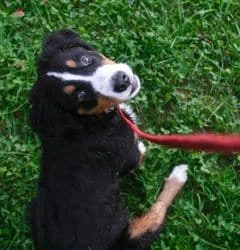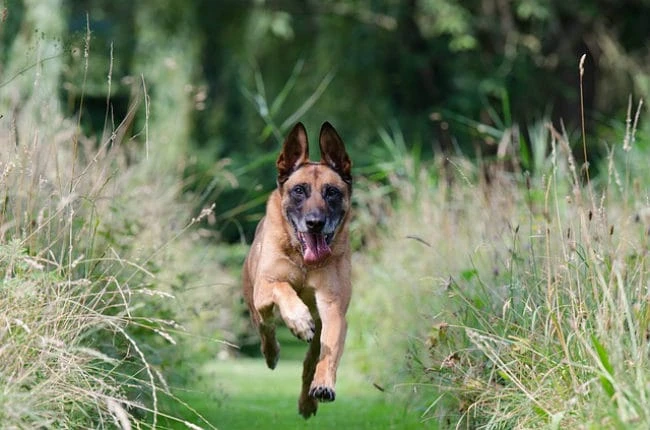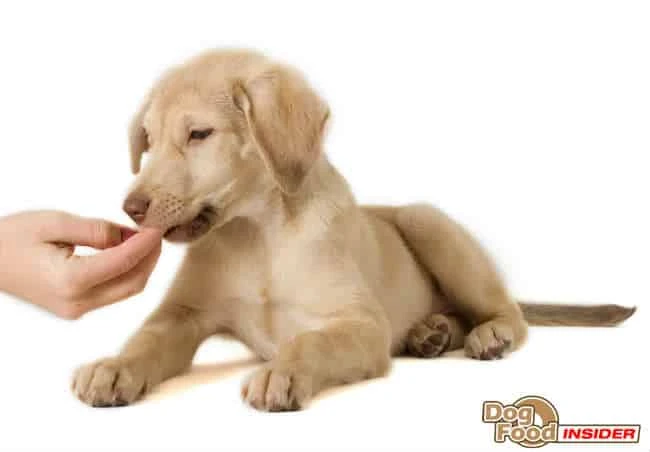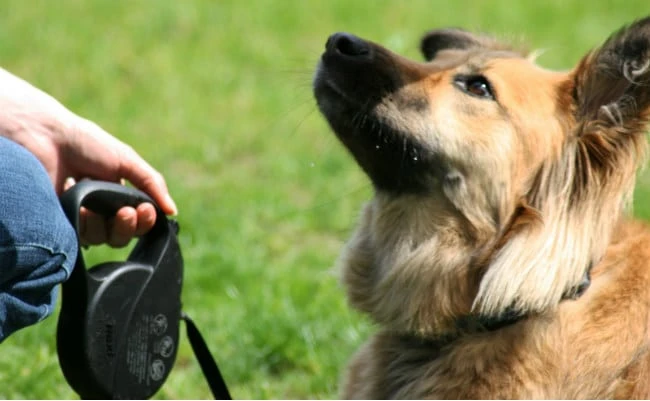Dog Leash Training, Dog Training Devices, Puppy Leash Training

Dog Leash Training

Dog leash training is not as difficult as you may think…
In this section you will learn puppy obedience training and dog training commands, techniques, methods and tools so that leash training a dog and leash training your puppy is fast and easy.
Although it is quite unnatural for your dog to wear a leash…if you start leash training your dog from an early age and incorporate it into your normal dog obedience training regime then it won’t take long for the leash to feel like a natural extension to your arm.
You and your dog are both attached to the leash and you need to remember that you are in control and not your dog.
Below we have provided a step by step guide to dog leash training and how to accomplish this dog training technique fast and effectively.
Dog Leash Training
Step 1 – Walking without the Leash .
This is a great way to start dog leash training, if you can learn how to train a dog to walk beside you without a leash, imagine what you can do when your dog is on a leash!
When you are dog leash training it is quite common for a dog to pull on the leash.
Consequently we are going to teach you a really cool dog obedience training technique that actually trains a dog to walk beside you without a leash.
The Hands-free Leash Training Technique
- You should start this technique in a hallway and make sure that it is relatively quiet so that your dog will not become distracted.
- Start by purchasing one of the best dog training devices that every dog trainer should own (a long dog leash.)
- Attach the leash that you have purchased which should be about 6 ft long to your dog’s collar but don’t actually hold the leash, lay the leash on the floor.
- You should now have your dog in the ‘sit’ position – your dog should now know that sit means sit. Now get your dog’s attention with a treat or a small toy.
- Now with you left leg leading you should start to walk forward. Your dog will automatically start to walk forward as it is drawn by your movement.
- When your dog’s shoulders have started to move ahead of your left leg, you should at this point stop suddenly and place your leg on the leash.
- Your dog will be brought to a sudden halt. Of course your dog may look at you and seem a little confused. You should smile and use your treat or toy to lure your dog back.
- Your aim is to encourage your dog back to your side, you should be really encouraging but don’t over excite your dog.
- As soon as your dog has returned to your side you should reward your dog with the treat or toy.
- You should continue to practice this dog leash training technique as often as you can.
- When you and your dog have progressed you should try luring your dog back to your side before he comes to a halt at the end of his leash.
Dog Leash Training
Step 2 – Introducing the Leash
- Before you even start leash training a dog or puppy or attempt to actually take your dog out on his leash you need to have actually introduced the leash to your dog.
- Assuming that we are working with a young dog or even better a puppy you should approach your dog with the leash and allow your dog to sniff and examine the leash.
- After your dog has thoroughly examined the leash and you feel that he is ready-you can now attach it to a well fitted and comfortable collar.
- Assuming that you have taught your dog the sit command – which we covered in our section on puppy obedience training you should now have your left hand holding the leash and your dog also on your left side – and your right hand should be holding a reward (a biscuit) as we are using reward based dog training.
- Now give the ‘sit’ command and wait for your dog to respond.
- You are both now in a good position to start walking your dog.
Dog Leash Training
Step 3 – Walking your dog on the Leash.
If you are always consistent throughout the dog training and puppy obedience training process dog leash training can be really simple.
It comes down to perfecting one area of the leash training process before you move onto the next stage.
You need to make sure that your dog has really mastered the techniques before you move on-and this applys to all areas of dog training or puppy training.
- You can now begin walking with your dog but do this slowly.
- As you walk you should make sure that your dog is walking beside you.
- If your dog is starting to pull on the leash give the ‘heel’ command. If your dog continues to surge forward you should gently slide your left had down the leash until you reach the collar and then gently pull backwards.
- When your dog has responded well to your ‘heel’ command you should give him lots of praise and a treat.
- If your dog continues to respond well and is walking by your side you can now slowly increase the distance that you are walking.
- If your dog is finding dog leash training really easy (and allot do) you should start adding a few right turns into the walk.
- You can train a dog to go right by gently guiding your dog to the right with your left hand as you are walking-(assuming that your dog has mastered the previous stage.)
- If you feel that your dog has mastered the leash training you can also now add a left turn into the walk. When you want your dog to ‘stop’ you hold some food or a treat in front of your dog’s nose to slow your dog down.
- Keep your dog close to your left hand side and as your dog slows down you should say ‘steady’ and glide to a stop.
Go from dog leash training back to – dog training – how to train a dog or back to dog obedience training home-page




